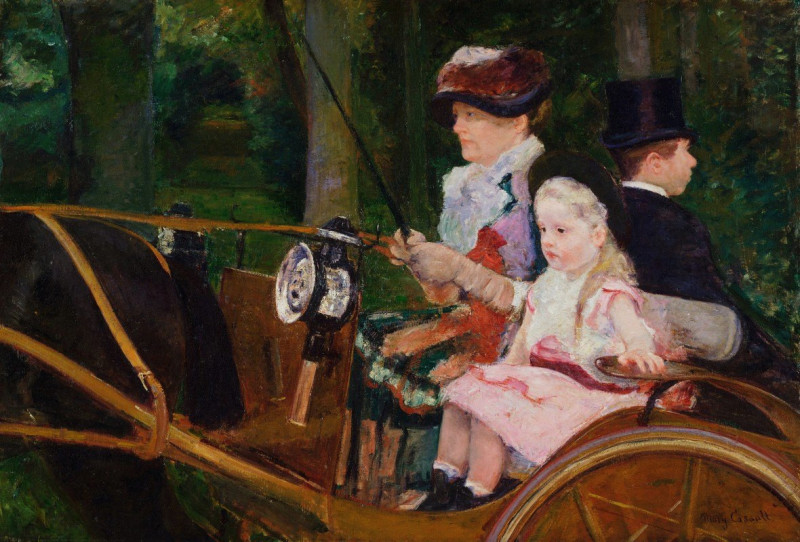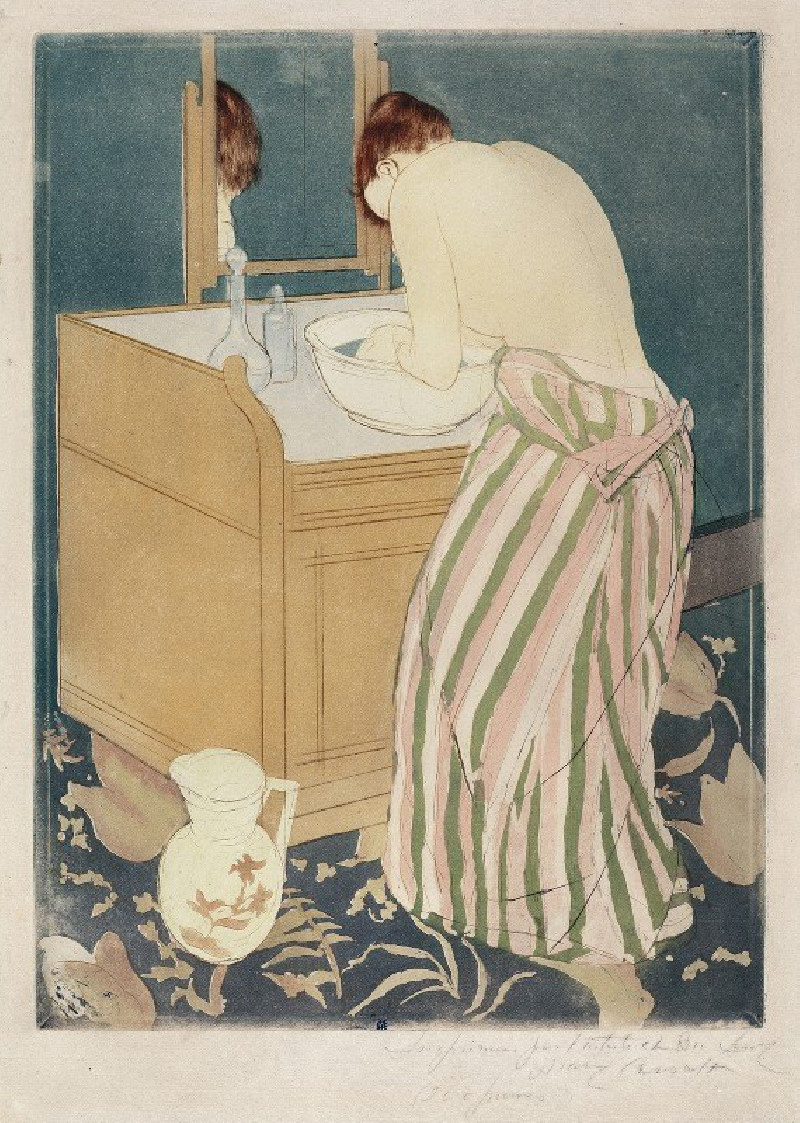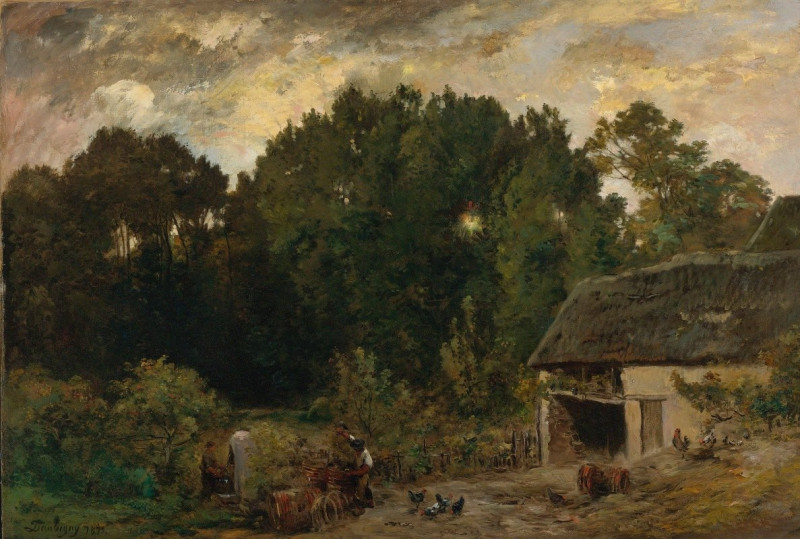The Boating Party (1893-1894)
Technique: Giclée quality print
Recommended by our customers
More about this artwork
"The Boating Party" is a captivating work of art by the acclaimed American painter Mary Cassatt, painted between 1893 and 1894. This painting vividly captures a serene moment on the water, featuring a mother, her baby, and a rower. The composition and perspective offer an intimate glimpse into this tranquil outing, set against a backdrop of a vividly painted river.In the foreground, the mother, dressed in a patterned blue and white dress complemented with a wide-brimmed yellow hat, holds her child delicately on her lap. The baby, clad in a soft pink gown, gazes innocently towards the viewer, adding a touch of innocence to the scene. On the right side of the painting, the rower, dressed in a navy blue sailor suit, navigates the boat with focused determination. His pose and attire convey a sense of sturdy reliability as he manages the oars.The use of vibrant blues and greens in the water and the contrasting colors of the boat and attire deliver a lively visual experience, emphasizing the play of light and the lively brushstrokes that were signature to Cassatt’s style. This artwork not only showcases Cassatt's skill in portraiture and her ability to capture everyday family moments but also reflects her interest in the themes of motherhood and children, which permeate her oeuvre."The Boating Party" remains one of Cassatt’s most beloved paintings, held in high esteem for its blend of warmth, familial affection, and calmness imparted by the natural setting. It offers viewers a snapshot of late 19th-century life and leisure, presented through the compassionate eyes of one of the era's most prominent female artists.
Delivery
Returns
Mary Stevenson Cassatt was an American painter and printmaker. She was born in Allegheny City, Pennsylvania (now part of Pittsburgh’s North Side), but lived much of her adult life in France where she befriended Edgar Degas and exhibited with the Impressionists. Cassatt often created images of the social and private lives of women, with particular emphasis on the intimate bonds between mothers and children.
She was described by Gustave Geffroy as one of "les trois grandes dames" (the three great ladies) of Impressionism alongside Marie Bracquemond and Berthe Morisot.In 1879, Diego Martelli compared her to Degas, as they both sought to depict movement, light, and design in the most modern sense.














































